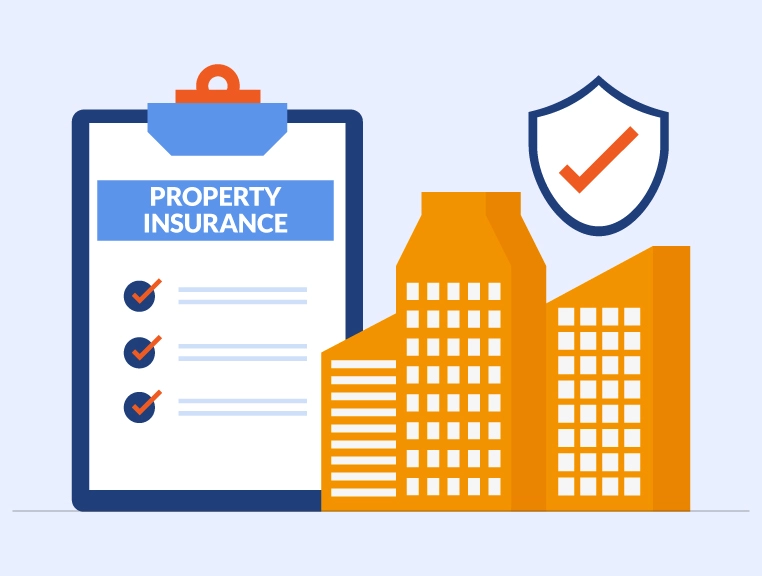Cost of a Fire Insurance Policy
Fire Insurance is the perfect protection plan for your offices, home, and any other workplace. It protects your building, assets, furniture, and fixtures against a series of perils. Claims can settle under this policy either on a market value basis or on a reinstatement value basis. So, what will be the cost of a fire insurance policy?
One should invest in fire insurance as it offers a safety net against a series of perils. Although you have security measures installed in your property, no property is resilient to fire, flood, explosion, theft, or burglary. The repercussion of contingencies can lead to financial fragility if you’re not ready to face the mishaps. It is smart to buy fire insurance and protect your building and its content from unforeseen damages that may occur due to fire and natural disasters.
Although fire insurance premium cost is cheap, still one should always keep an eye on the costing factors and scope of coverage.
The cost of a fire insurance policy is ascertained on the basis of various parameters. The following are the main factors that affect the premium rate under fire insurance:
1. Occupancy, a cost determinant in Fire Insurance:
Fire insurance premium rate depends upon the nature of occupancy i.e. for what purpose the building is been used. An office, restaurant, or shop has lower risk exposures hence, the low premium amount charged to them.
However, the premium rate on manufacturing, warehouses, and industrial premises is comparatively higher as the occupancy of the building assumes high-risk exposures. If your building has basement risk exposure, it increases the premium amount.
2. Risk Location factor & cost:
The location of your building plays a pivotal role in premium calculation. Multiple-risk location assumes a higher premium amount as compared to single-risk location. Risk locations such as Assam, Arunachal Pradesh, Manipur, etc. which are more prone to earthquakes assume a higher premium amount. States or regions which are less prone to earthquakes assume lower premium amounts. Even when your property is in an area where the crime rate is high, the premium cost would be higher. Even the nature of the adjoining building also affects the premium amount.
3. Value of your company and total assets:
The total value of your assets and building is the basic factor of the premium amount. The market value of the building and the purchase value of all the contents are taken into consideration while calculating the premium amount.
4. Add-on Covers in fire Insurance:
Various add-on covers can be availed by paying an additional premium amount. Special perils coverage can be covered under fire insurance. As per your requirement, you can include these additional covers under the fire insurance policy. Some of them are:
- Loss of Rent
- Additional Expenses of Rent for an Alternative Accommodation
- Start-Up/Shut Down Expenses Clause
- Removal of Debris
- Temporary Repair Cost
- Deterioration of Stocks in Cold Storage
- Forest Fire
- Impact Damage
- Spontaneous Combustion
- Omission to Insure
- Spoilage Material Damage Cover
- Leakage And Contamination Cover
5. The construction of the building and occupancy:
When the building is under construction, the sum insured of the project is taken into consideration for what purpose the building will be used. Hazardous risk exposures to the property also affect the premium amount.
Apart from mentioned factors, deductibles, past claim history and installment of security measures also affect the premium rate of fire insurance.
Read About: 12 perils of fire insurance policy
Case Study: Cost of a fire insurance policy
Rahul, a restaurant owner has bought fire insurance with a sum insured amount of Rs 50 lakhs. He has included special perils and various other add-on covers in fire insurance. He has three risk locations covered under fire insurance. While purchasing the fire insurance policy, he did not disclose the true value of the building and assets to the insurer in order to lower the premium amount. Rahul mentioned the property amount and assets value are very low.
Later, a big fire erupted in one of the risk locations which created havoc in Rahul’s life. Rahul informed the insurer about the incident and filed the claim. A surveyor visited the risk location and after the loss analysis, he called this case an under-insurance case.
Since the value of assets and building was false, an insurer did not cover the total loss incurred by Rahul due to the mishap. Instead, the insurer will pay a certain percentage of the loss to Rahul, and the rest of the financial loss will be borne by Rahul.
Hence it is important to disclose all the facts and information while purchasing the fire insurance policy.
About The Author
Shivani
MBA Insurance and Risk
She has a passion for property insurance and a wealth of experience in the field, Shivani has been a valuable contributor to SecureNow for the past six years. As a seasoned writer, they specialize in crafting insightful articles and engaging blogs that educate and inform readers about the intricacies of property insurance. She brings a unique blend of expertise and practical knowledge to their writing, drawing from her extensive background in the insurance industry. Having worked in various capacities within the sector, she deeply understands the challenges and opportunities facing property owners and insurers alike.




